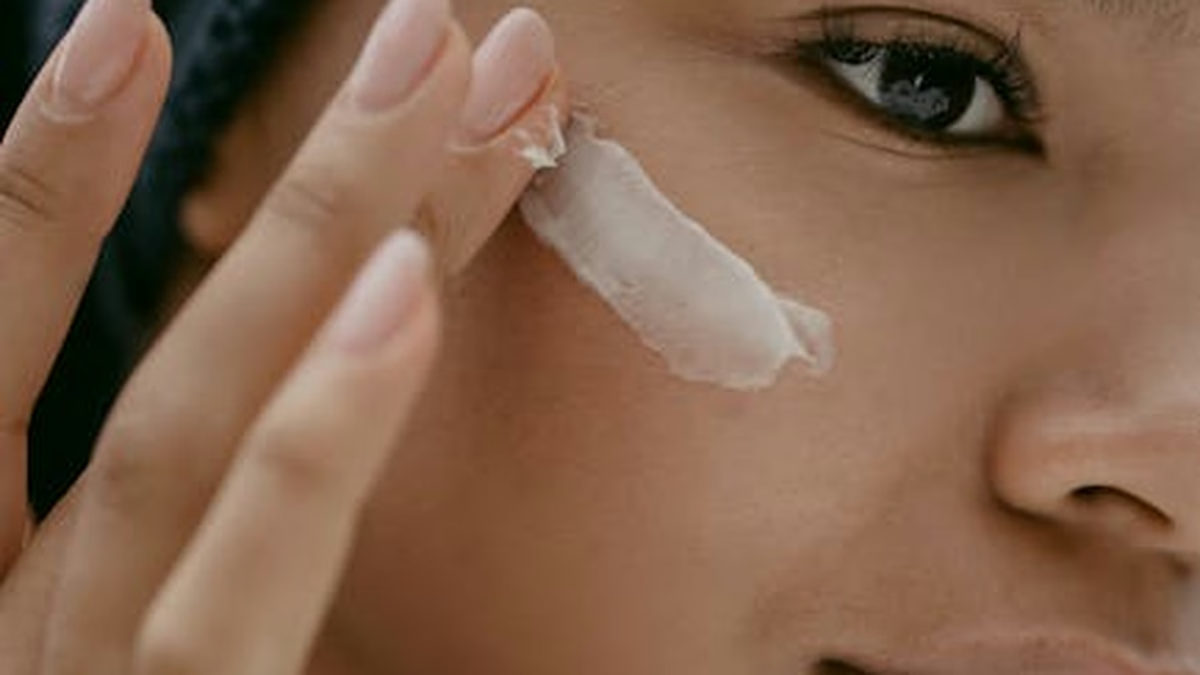Fall Eczema: Soothing Sensitive Skin
The crisp air, the vibrant foliage, and the cozy sweaters – fall is a season many look forward to. However, for those with eczema, the change in seasons can bring unwelcome guests: eczema fall flare-ups. Understanding the triggers and implementing a proactive skincare routine are crucial to maintaining comfortable, healthy skin throughout autumn. Let’s explore effective strategies for managing fall eczema flare-ups and keeping your eczema sensitive skin happy.
Understanding Why Fall Triggers Eczema
Eczema, also known as atopic dermatitis, is a chronic inflammatory skin condition characterized by dry, itchy, and inflamed skin. Several factors specific to the fall season can exacerbate eczema symptoms:
The Dry Air Factor
As temperatures drop, the air becomes drier. This lack of humidity draws moisture from the skin, leading to dryness and increased susceptibility to irritation. According to the National Eczema Association, dry skin is one of the most common triggers for eczema flare-ups. This makes it essential to focus on hydration during the fall months.
Temperature Fluctuations
The transition from warm summer days to cooler fall evenings can be harsh on sensitive skin. Sudden temperature changes can disrupt the skin’s natural barrier function, making it more vulnerable to irritants and allergens. Going from a warm, heated indoor environment to the crisp, cold outdoors can be a significant trigger.
Increased Exposure to Irritants
Fall often brings increased exposure to indoor allergens like dust mites, mold, and pet dander, as we spend more time indoors with windows closed. Additionally, heavier clothing made of wool or synthetic materials can irritate sensitive skin. Think about those cozy sweaters – are they actually irritating your skin?
Seasonal Allergies
Ragweed pollen, a common fall allergen, can trigger eczema flare-ups in some individuals. The allergic reaction can manifest as skin irritation and inflammation, even if the individual doesn’t experience typical respiratory allergy symptoms. It’s important to be aware of pollen counts in your area.
Proactive Skincare Strategies for Fall Eczema
The key to Managing eczema fall flare-ups is a proactive and consistent skincare routine. Here are some actionable strategies to implement:
Hydration is Key
Combatting dryness is paramount. Here’s how to keep your skin hydrated:
- Moisturize Frequently: Apply a thick, fragrance-free moisturizer immediately after bathing or showering, while the skin is still damp. Reapply throughout the day, especially after washing your hands. Look for emollients containing ceramides, which help repair the skin barrier.
- Humidify Your Home: Use a humidifier, especially in your bedroom, to add moisture to the air. Aim for a humidity level between 40-50%.
- Drink Plenty of Water: Staying hydrated from the inside out is just as important.
Gentle Cleansing
Harsh soaps and cleansers can strip the skin of its natural oils, exacerbating dryness and irritation. Choose gentle, fragrance-free cleansers specifically formulated for sensitive skin.
- Avoid Hot Water: Opt for lukewarm water when bathing or showering. Hot water can further dry out the skin.
- Pat Dry: Gently pat your skin dry with a soft towel instead of rubbing.
- Limit Bath Time: Keep showers and baths short (no more than 10-15 minutes) to minimize water loss from the skin.
Identify and Avoid Triggers
Keeping a journal to track potential triggers can be incredibly helpful in Managing your eczema. Note down what you ate, what products you used, and what activities you engaged in before a flare-up.
- Clothing Choices: Wear soft, breathable fabrics like cotton. Avoid wool and synthetic materials that can irritate the skin.
- Laundry Products: Use fragrance-free, hypoallergenic laundry detergents. Consider double-rinsing your clothes to remove any residue.
- Dust Mite Control: Wash bedding frequently in hot water and use dust mite-proof covers on mattresses and pillows.
- Pollen Awareness: Monitor pollen counts and limit outdoor activities on high pollen days. Consider using an air purifier with a HEPA filter.
Topical Treatments
Your dermatologist may prescribe topical corticosteroids or other medications to manage inflammation and itching. It’s crucial to follow their instructions carefully.
- Topical Corticosteroids: These medications reduce inflammation and itching. Use them sparingly and as directed by your doctor to avoid potential side effects.
- Topical Calcineurin Inhibitors (TCIs): TCIs, such as tacrolimus and pimecrolimus, are non-steroidal alternatives that can help reduce inflammation.
- Barrier Repair Creams: These creams help restore the skin’s natural barrier function and reduce moisture loss.
Managing Active Flare-Ups: Soothe Eczema Fall
Even with the best preventative measures, flare-ups can still occur. Here’s how to manage them effectively:
- Apply a Cold Compress: A cold compress can help reduce itching and inflammation.
- Take an Oatmeal Bath: Colloidal oatmeal has anti-inflammatory properties and can soothe eczema fall symptoms.
- Use Wet Wraps: Applying wet wraps after moisturizing can help hydrate the skin and reduce inflammation.
- Avoid Scratching: Scratching can worsen inflammation and increase the risk of infection. Keep your nails short and consider wearing gloves at night.
- Consult Your Dermatologist: If your flare-up is severe or doesn’t improve with home remedies, consult your dermatologist for further treatment.
Case Study: Sarah’s Autumn Eczema Care Routine
Sarah, a 35-year-old with a history of eczema, noticed her skin becoming increasingly dry and itchy each fall. She implemented the following routine to manage her fall eczema flare-ups:
- Installed a humidifier in her bedroom.
- Switched to fragrance-free laundry detergent.
- Applied a thick moisturizer containing ceramides twice daily.
- Started taking short, lukewarm showers.
- Wore cotton clothing whenever possible.
As a result of these changes, Sarah experienced significantly fewer and less severe flare-ups during the fall season. This demonstrates the effectiveness of a proactive and consistent skincare routine.
When to Seek Professional Help
While many eczema flare-ups can be managed with over-the-counter treatments and lifestyle modifications, it’s essential to seek professional help if:
- Your symptoms are severe or persistent.
- You develop signs of infection, such as pus or fever.
- Over-the-counter treatments are not effective.
- Eczema is interfering with your daily life.
A dermatologist can provide a diagnosis, recommend appropriate treatments, and help you develop a long-term management plan.
Conclusion: Enjoying a Comfortable Fall with Eczema
Managing eczema fall flare-ups requires a proactive approach, understanding your triggers, and implementing a consistent skincare routine. By prioritizing hydration, gentle cleansing, and trigger avoidance, you can significantly reduce the severity and frequency of flare-ups and enjoy a comfortable and enjoyable autumn season. Remember to consult with your dermatologist for personalized advice and treatment options. Don’t let fall eczema control your life – take control of your skincare and embrace the beauty of the season!
References
-
Centers for Disease Control and Prevention (CDC)
– Leading national public health institute of the United States. -
World Health Organization (WHO)
– Global authority on international public health. -
Mayo Clinic Healthy Lifestyle
– Evidence-based health advice from medical experts.






